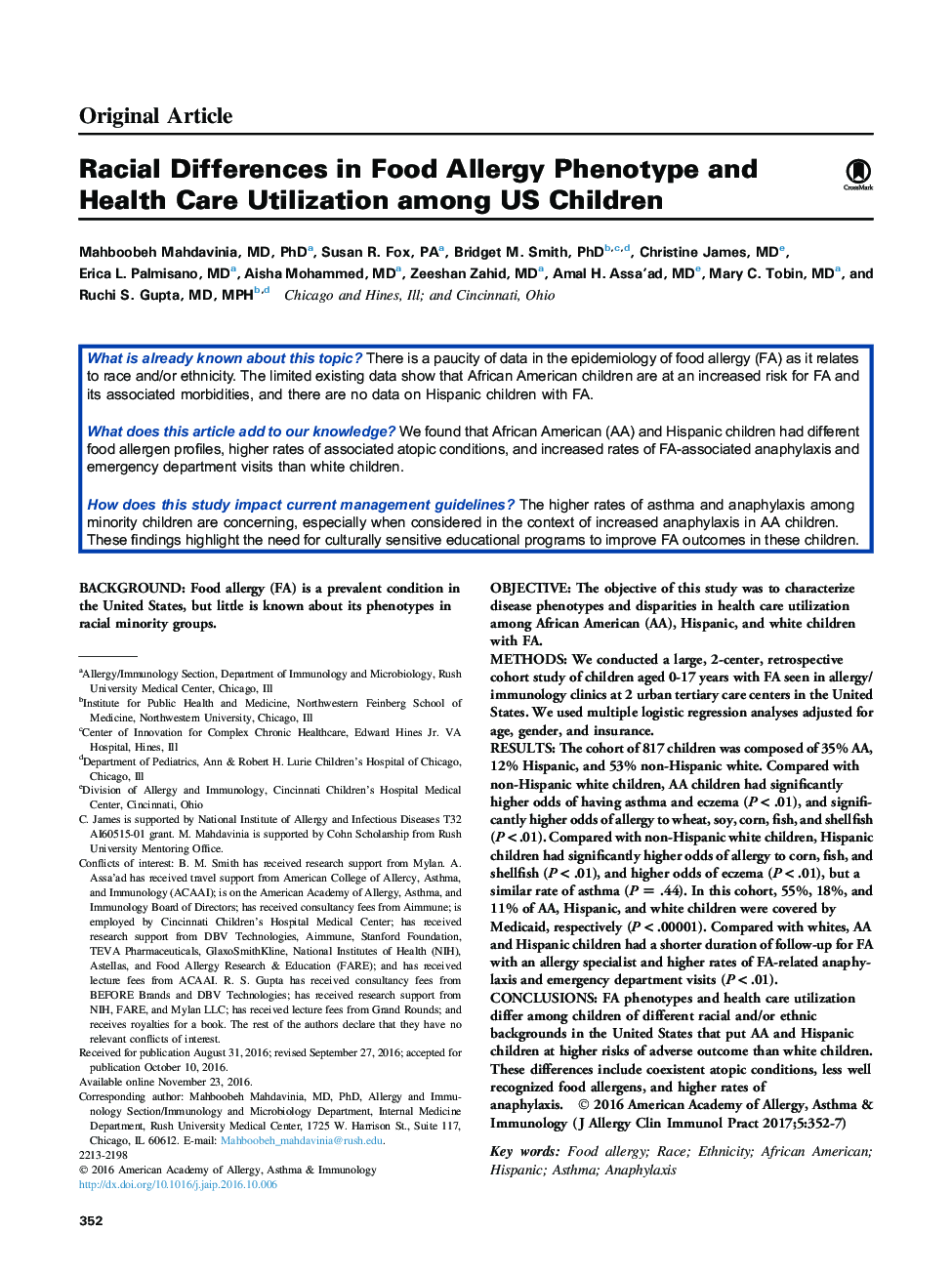| کد مقاله | کد نشریه | سال انتشار | مقاله انگلیسی | نسخه تمام متن |
|---|---|---|---|---|
| 5647375 | 1587124 | 2017 | 7 صفحه PDF | دانلود رایگان |
BackgroundFood allergy (FA) is a prevalent condition in the United States, but little is known about its phenotypes in racial minority groups.ObjectiveThe objective of this study was to characterize disease phenotypes and disparities in health care utilization among African American (AA), Hispanic, and white children with FA.MethodsWe conducted a large, 2-center, retrospective cohort study of children aged 0-17 years with FA seen in allergy/immunology clinics at 2 urban tertiary care centers in the United States. We used multiple logistic regression analyses adjusted for age, gender, and insurance.ResultsThe cohort of 817 children was composed of 35% AA, 12% Hispanic, and 53% non-Hispanic white. Compared with non-Hispanic white children, AA children had significantly higher odds of having asthma and eczema (P < .01), and significantly higher odds of allergy to wheat, soy, corn, fish, and shellfish (P < .01). Compared with non-Hispanic white children, Hispanic children had significantly higher odds of allergy to corn, fish, and shellfish (P < .01), and higher odds of eczema (P < .01), but a similar rate of asthma (PÂ = .44). In this cohort, 55%, 18%, and 11% of AA, Hispanic, and white children were covered by Medicaid, respectively (P < .00001). Compared with whites, AA and Hispanic children had a shorter duration of follow-up for FA with an allergy specialist and higher rates of FA-related anaphylaxis and emergency department visits (P < .01).ConclusionsFA phenotypes and health care utilization differ among children of different racial and/or ethnic backgrounds in the United States that put AA and Hispanic children at higher risks of adverse outcome than white children. These differences include coexistent atopic conditions, less well recognized food allergens, and higher rates of anaphylaxis.
Journal: The Journal of Allergy and Clinical Immunology: In Practice - Volume 5, Issue 2, MarchâApril 2017, Pages 352-357.e1
